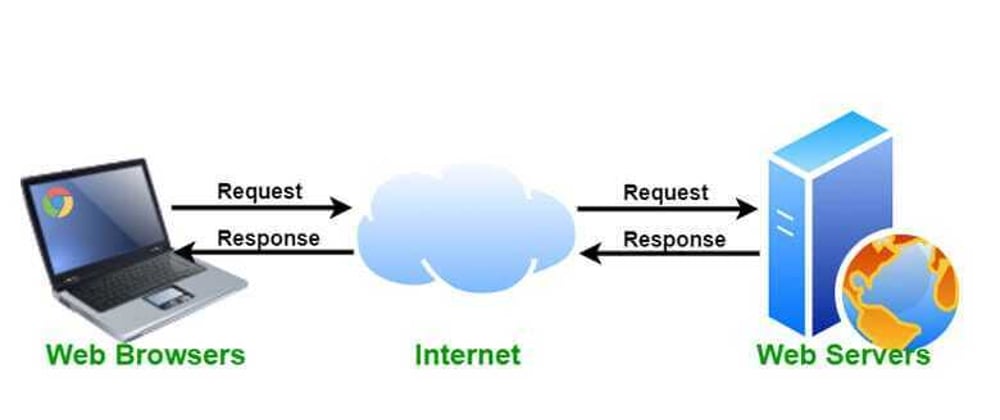How Websites Work: A Beginner's Tutorial
Introduction
Have you ever wondered how websites actually work? In this comprehensive guide, we'll delve into the fundamental concepts behind websites, covering everything from the basics of HTML and CSS to the intricacies of server-client interactions. By the end of this tutorial, you'll have a solid understanding of how websites function and how you can create your own.
Understanding the Basics
What is HTML?
HTML, or Hypertext Markup Language, is the standard markup language used to create web pages. It provides the structure and content of a webpage by using a system of tags and attributes. Let's look at a basic example:
<!DOCTYPE html>
<html>
<head>
<title>My First Website</title>
</head>
<body>
<h1>Hello, World!</h1>
<p>This is a paragraph.</p>
</body>
</html>
In this example, <html>, <head>, and <body> are HTML tags that define the structure of the webpage, while <h1> and <p> are tags used to display headings and paragraphs, respectively.
What is CSS?
CSS, or Cascading Style Sheets, is used to style the appearance of HTML elements on a webpage. It allows you to control aspects such as color, layout, and font. Here's a simple CSS example:
h1 {
color: blue;
font-family: Arial, sans-serif;
}
This CSS code sets the color of <h1> headings to blue and specifies the font family.
Server-Client Interaction
What is a Server?
A server is a computer or system that provides resources, data, or services to other computers, known as clients, over a network. In the context of websites, a server hosts the files and resources necessary to display a webpage.
What is a Client?
A client is a device or software application that requests and receives services or information from a server. Web browsers such as Chrome, Firefox, and Safari are examples of clients that retrieve and display web content from servers.
How Does the Web Work?
When you type a website's URL into your browser and press enter, several steps occur behind the scenes:
- The browser sends a request to the appropriate server for the webpage.
- The server processes the request and retrieves the necessary files, such as HTML, CSS, and JavaScript.
- The server sends these files back to the browser.
- The browser interprets the files and renders the webpage for the user to view.
Creating Your Own Website
Now that you understand the basics, let's create a simple webpage together. We'll start by creating an HTML file called index.html:
<!DOCTYPE html>
<html>
<head>
<title>My First Website</title>
<link rel="stylesheet" href="styles.css">
</head>
<body>
<h1>Hello, World!</h1>
<p>Welcome to my website.</p>
</body>
</html>
Next, let's create a CSS file called styles.css to style our webpage:
body {
font-family: Arial, sans-serif;
background-color: #f0f0f0;
}
h1 {
color: blue;
}
Save both files in the same directory and open index.html in your web browser. You should see your webpage with the specified styles applied.
Frequently Asked Questions (FAQ)
How do I upload my website to the internet?
To make your website accessible on the internet, you'll need to purchase a domain name and hosting service. Once you have these, you can use FTP (File Transfer Protocol) or a web hosting control panel to upload your files to the server.
Can I create a website without knowing how to code?
Yes, there are many website builders and content management systems (CMS) available that allow you to create websites without coding. These platforms often provide drag-and-drop interfaces and customizable templates.
What is the difference between static and dynamic websites?
Static websites display the same content to all users and are typically built using HTML and CSS. Dynamic websites, on the other hand, generate content dynamically based on user interactions or database queries. They often use server-side scripting languages like PHP or JavaScript frameworks like React.
Conclusion
Websites are the backbone of the internet, allowing us to share information, connect with others, and conduct business online. By understanding the basics of HTML, CSS, and server-client interactions, you can create your own websites and contribute to the ever-expanding web. So, what are you waiting for? Start building your online presence today!
This tutorial has provided a foundational understanding of how websites work and how you can create your own. Whether you're a complete beginner or looking to expand your web development skills, I hope you found this guide informative and inspiring.
By following this tutorial, you've taken the first steps towards becoming a proficient web developer. With practice and continued learning, you'll be able to create dynamic and visually appealing websites that captivate audiences around the world.







Top comments (0)